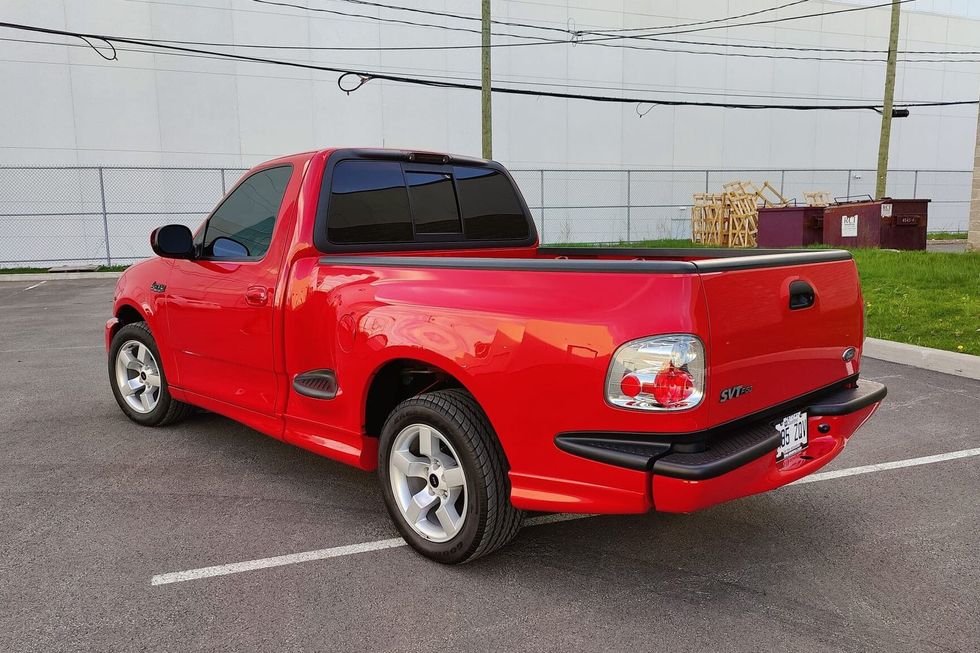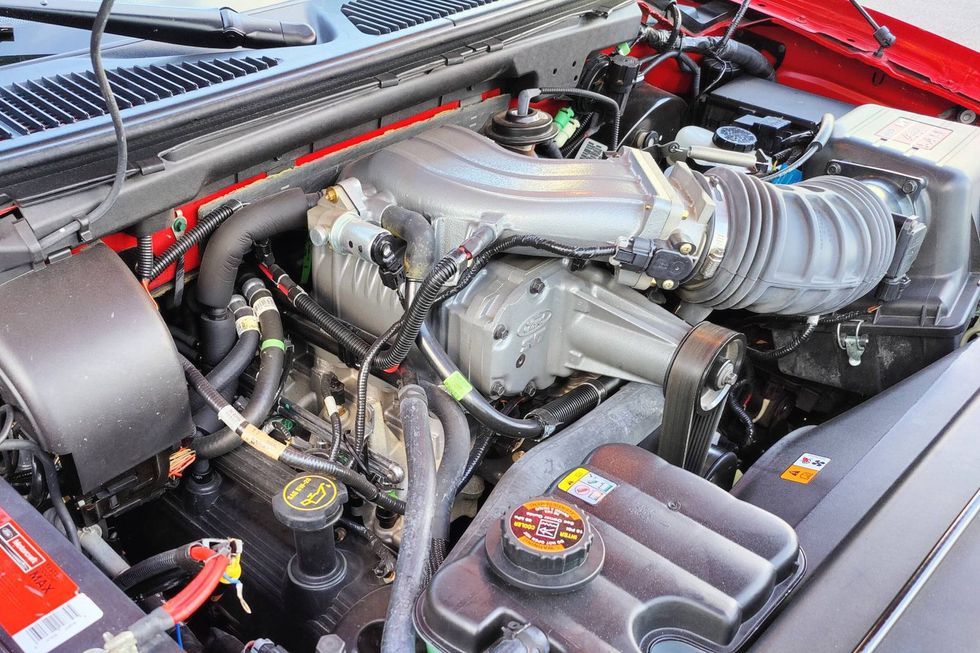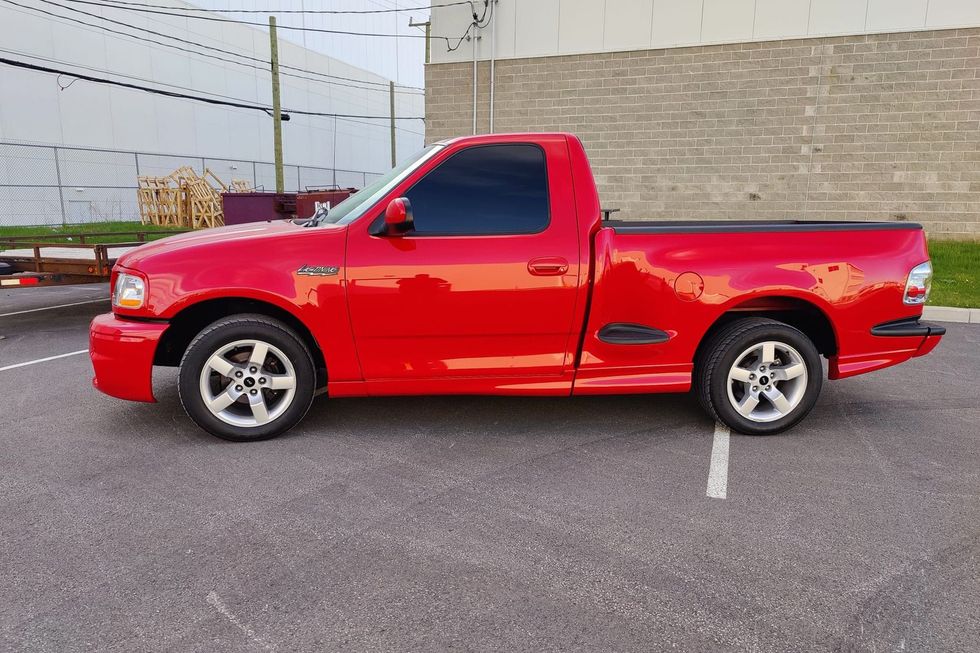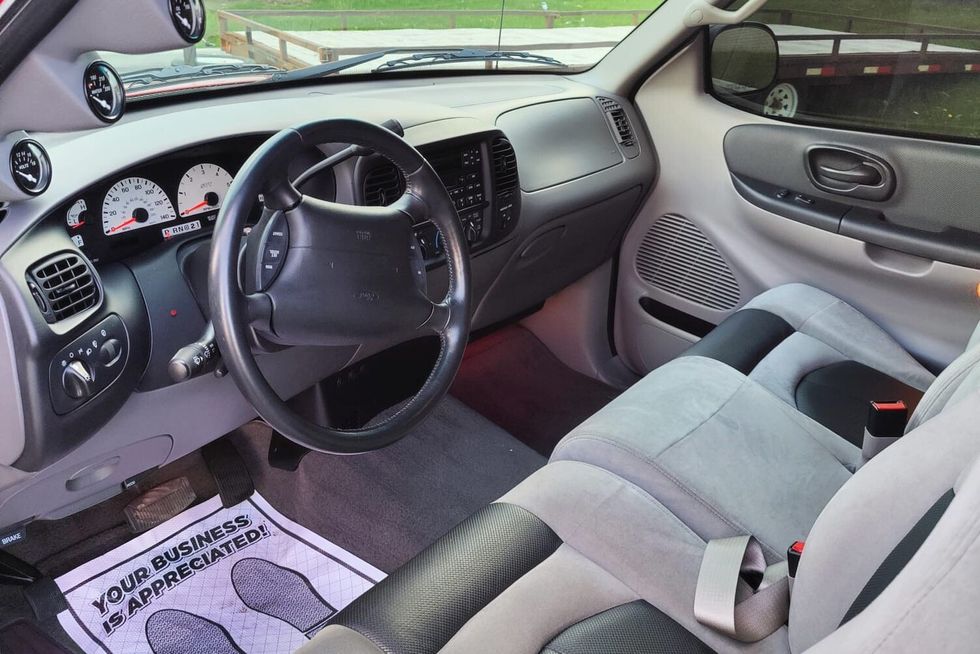One of ...? - 1967 Chevrolet Impala SS 427
A car that isn't supposed to exist: This L-72-powered 1967 Impala SS 427 has it all, except its papers
09/22/2018


If you listen to the experts, Bill Wickman's L-72-powered 1967 Chevrolet Impala SS 427 shouldn't exist. Chevy supposedly didn't put any 427-cu.in./ 425hp big-block Mark IV engines in their full-size line in 1967. And, yet, it's all there: a date-code correct block; square-port, cast-iron cylinder heads; a big Holley carburetor mounted on an aluminum intake manifold; solid lifters with a matching cam; that unique, twin-snorkel air filter housing; and all of the forged bits inside that help keep the engine together even when it gets up around 7,000 RPM, well north of the tachometer's 6,000 RPM redline. Ironically enough, the experts also seem to think that Bill's car is, in fact, completely original, even if they can't verify it.
Introduced in 1966, the L-72 427-cu.in. V-8 engine was rated at 425hp, a number that exists somewhere between underrated and ludicrously, laughably low. After all, the first high-performance Mark IVs, issued in 1965, were just 396-cu.in., yet were rated at the same 425hp. You could get an L-72 in any full-size Chevrolet in 1966 and again in 1968 or 1969, but there is very limited record of the L-72 being available in 1967. Certainly, there was no advertising or product information printed regarding this special engine.
Bill makes no apologies about the car he has owned for more than 30 years. "You cannot argue with the numbers on the car," he says. "Even [noted Chevrolet expert and author] Alan Colvin said that the car appears to be as presented even with the very rare engine ID code. All of the other 385hp cars had a 5,900 RPM redline on the tachometer and this one has a 6,000 RPM tach because it had solid lifters." In fact, it was Colvin who noted in his book that Chevrolet's Tonawanda, New York, engine plant cast 11 four-bolt-main 427 blocks with the proper code for installation in a full-size Chevrolet, yet GM made no record of ever installing them on the production line. With the exception of Bill's SS 427, no other 427/425hp full-size 1967 Chevrolet has yet surfaced.
Some of those same experts who have taken a look at Bill's car seem certain that the absolutely correct L-72 engine in his car appears to be the right engine for his SS 427 as it left the factory. In other words, there is no evidence of any shenanigans going on here, but without paper--mere paper--the car exists in a sort of limbo.
Let's forget the veracity and authenticity for a moment to simply ponder the car itself, as Bill's SS 427 is pretty damn special no matter how you slice it. Sometimes referred to by its Z24 option package designation, the SS 427 was only offered from 1967 through 1969, the last year of any Impala SS until the name was briefly revived in the mid-1990s. The 1967 model year was the last in which the Impala SS was its own range and even the SS 427 was sometimes advertised as a separate model. Of course, by 1967, the Impala SS was largely a trim level, and more about sportiness than actual performance, with six-cylinder engines the opening salvo for the model. But Chevy did not abandon its performance-oriented customers by any means, even as the intermediate and compact muscle cars had begun seizing the headlines. Instead, Chevrolet introduced the SS 427, RPO Z24, which included the L-36 385hp, 427-cu.in. engine as standard equipment.
With big-blocks then regularly being stuffed into the smaller models, the big-engine, full-size performance car was already a bit of an anachronism and not nearly the rage it had been just a couple of years earlier, when it was a hit with pro and amateur drag racers alike. But the Z24 models--badged only as SS 427 and not wearing any Impala emblems at all in 1967--were packaged right. Available only as a coupe or convertible model with Coke bottle-esque quarter panels, the SS 427 was a performer out of the box, even without the highest horsepower engine under its unique, sculpted hood. Given the huge numbers of full-size Chevys being sold at the time (well over a million cars per year), the 2,124 SS 427s sold reflect just a tiny fraction of overall full-size Chevy sales.
The L-72 engine program, which launched for 1966, was still in its ascendancy in 1967. Quite a different beast from the two other 427s in the Chevrolet option catalog, the L-72 begins with a cast-iron four-bolt-main block and cast-iron, square-port cylinder heads with massive 2.19-inch intake valves. Forged pistons making 11.0:1 compression spin a forged crank. Through a unique, dual-snorkel air cleaner, a 780-CFM Holley four-barrel carburetor mixes the air and fuel before it flows through an aluminum intake manifold on its way to those giant valves. The net result is 425hp at 5,600 RPM and a beefy 460-lbs.ft. of torque at 4,500 RPM.
As we've said, of 2,124 SS 427s built that year, Bill's is the only L-72 known to exist. Although Bill has never taken it to the strip, "a lot of street racing" confirmed to him that "the car is fast, there's no doubt about it." Speaking of fast, a previous owner reported hitting 168 MPH during a land speed record run with the car, which probably explains how Bill discovered the car had super-tall 2.73 gears in the rear end.
"I really didn't pay much attention to the top-speed claim," he says, "but then when I drove it, it went like 70 MPH in first gear and 90 MPH in second. It was ridiculous, so I ended up changing it to 3.73 gears. That was a fun car. I broke two GM Posi units in it, so I got fed up with that and put in a Moroso Power Brute, which is still in the car today. I put a 4.56 in it, not realizing that's really a little bit too much gear for a big-block. It'll pull over seven grand and the redline on the tach is six grand, but it's got solid lifters, so I never had a problem doing that."

After three decades of ownership, Bill, a body shop owner from Joliet, Illinois, finally decided to restore the car in 2010. Fortunately, with its West Coast origins--it was built in Los Angeles and Bill bought it from the previous owner in Seattle--the car was in pretty good shape, with no rust. "I was really, really lucky to have a nice, California car. Other than the 427 emblem I lost the first year, I had everything on this car. It was just a matter of getting it all polished or re-plated. I wasn't missing anything, really."
Although they were largely in decent shape, Bill had the seats redone, front and back, due to the unfortunate meeting of a screwdriver in his back pocket and the vinyl on the front bucket seat. Between Bill and his upholstery guy, they decided to redo the whole interior because matching new front covers to the rear simply would never quite look right.
Bill did the engine not long after he got the car, and because he has put very few miles on it since then, he has left it alone. But he did it right the first time. "I went through it 30 years ago," he tells us. "It's all GM inside: the original pistons, rods, cam, solid lifters, rocker arms--I didn't replace them, either. I did put new valve springs on it, though. I put new bearings and rings in and I ordered all the stuff from GM because you could still order it from them back then. I had to cut the crank .010 under because it had some scratches on it that I didn't like, but I didn't have to bore the block. It's only got about 1,000 miles on it since I bought it. It has never fouled a spark plug. I put one new set of spark plugs in it 15 years ago and another set last year when I did the restoration."
And Bill did the restoration right, too, scoring a total of 992 points out of a possible 1,000 at the Muscle Car and Corvette Nationals in nearby Chicago at the car's first show outing. To top it off, the chief judge, noted 1960s Chevrolet authority Bill Braun, hand-wrote a note on the judging sheets saying that the three judges agreed that the L-72 is the correct engine for the car. While it's not the definitive paperwork Bill needs, it certainly supports the case for authenticity.
But there may be a reason no one has previously known about the existence of any L-72 SS 427s, and why such a limited paper trail exists. In the beginning of the model year, Chevrolet simply didn't make any L-72s at all. And when the availability of the L-72 was added later in the model year, it wasn't advertised. In fact, it was almost an afterthought when a Chevrolet Engineering Service Bulletin was sent to dealers on March 21, 1967, announcing its availability. Amidst the legalese, corporate jargon, torque-spec updates and nearly an entire page dedicated to explaining the included acronyms, there is a single, short paragraph in the bulletin that seems to casually mention, oh, by the way, the re-introduction of the L-72: "Special high performance Mark IV engines (425hp) cast-iron heads released as a regular production option (L-72) on Chevrolet series. Present indications are that the material will be available on 4-3-67 at the engine source."
Translation: You can now begin accepting orders for L-72-equipped full-size cars through the standard ordering process and expect them to be delivered some time after April 3. Given how late in the model year this announcement was made, it's likely that everyone who really wanted a 427-powered Impala had already stepped up to the plate and plunked down his hard-earned cash for a not-too-shabby L-36 with "just" 385hp.
But at that point, just a couple of months before the annual summer shutdown for the changeover to the '68s, the unannounced, unadvertised engine was really only briefly available, possibly explaining the incredibly low number of cars so equipped. Given the way the RPO system operated and the way Chevy's multi-tiered, B-body, full-size lineup worked, it's entirely possible that those 11 425hp engines coded for the "Chevrolet series" ended up in more than just SS 427 Impala coupes. Racers in the know tended to favor the lighter, more stripped-down Biscayne to the near-luxury Impala, so it's possible that some of those engines were installed in different cars, which may explain why neither we nor Bill have seen any other 1967 Impala equipped with the top-of-the-heap Mark IV. Chevrolet assembled Bill's SS 427 at its South Gate, Los Angeles, plant in the fifth week of May, 1967, a date range that can be verified and one that puts it within the short window of L-72 availability.
Having owned the car since 1980, Bill can attest to the authenticity as he knows it, along with the experts who have seen it. But in terms of 100-percent verification, he has hit a bit of a wall. "I'm kind of at a dead end," he says, "because I don't know where to turn to with it. It seems to me like a car should be based more on the real numbers that are on the car, that so many people have looked at and agreed that it's never been altered, whereas a piece of paper... Well, they redo paperwork and make it look so original it's unbelievable. But for some reason, people want to see that piece of paper."
Bill makes another point regarding the era during which he bought the car, when muscle cars were not so much investment-grade material but barely one step ahead of being valued solely as scrap iron. "Who would have tried to phony the car that long ago?" he asks. "It would have been pointless. It wasn't worth anything then. Maybe today it would be, but not back then."
OWNER'S VIEW
I was always a small-block guy and I just had this urge to have a big-block Impala; I never had big-block before in my life. So I ended up with this car. Why I ended up keeping it all these years, I have no idea, other than that I really liked it. We'd take it to cruise nights and stuff like that and a lot of people would look at it and say, 'Boy, this is really a rare car.' I'd just blow it off because it didn't mean anything to me.
For some reason, I ended up hanging onto it, and I have had a lot of cars in my life. When I saw the first copy of Alan Colvin's Chevy by the Numbers book and he mentioned that there were 11 engines with the suffix code ID on the block, but there was no record of installation for those engines, I went into the garage one night, probably eight years ago, and looked at the pad, cleaned it off a little bit with a rag, and it had the ID on it. That had me interested.
There aren't a lot of these cars around. It's fun to drive and it rides really nice being a full-size car. Boy, you step on it, that front end lifts up and it just leaves two black marks behind the car. It's just fun to drive. There's nothing I don't like about it.
-- Bill Wickman
CLUB SCENE
Vintage Chevrolet Club of America
P.O. Box 609
Lemont, Illinois 60439
708-455-8222
www.vcca.org
Dues: $35/year • Membership: 8,000
National Impala Association
5400 43rd Avenue South
Minneapolis, Minnesota 55417
Phone: 612-727-2404
Fax: 612-726-6464
www.nationalimpala.com
Dues: $35/year • Membership: 1,800
PROS
+ Factory big-block and four-speed
+ Classic full-size Chevy style and ride
+ Super-rare
CONS
- No records Chevy ever built the car
- Smaller cars were all the rage by '67
- Lack of paperwork
1967 CHEVROLET IMPALA SS427
425 Horsepower @ 5,600 RPM
460-lbs.ft. torque @ 4,500 RPM
1/4-mile: 13.65 seconds @ 105 MPH*
SPECIFICATIONS
PRICE
Base price -- $3,003
Price as profiled -- Not available
Options on car profiled -- Z24 SS 427 ($316); L-72 427-cu.in. 425hp V-8 engine
ENGINE
Type -- Chevrolet Mark IV "big-block" 90-degree OHV V-8, cast-iron block and cylinder heads, forged crankshaft, forged-aluminum pistons
Displacement -- 427 cubic inches
Bore x Stroke -- 4.25 x 3.76 inches
Compression ratio -- 11.00:1
Horsepower @ RPM -- 425 @ 5,600
Torque @ RPM -- 460-lbs.ft. @ 4,500
Valvetrain -- Mechanical valve lifters
Main bearings -- 5
Fuel system -- Single Holley 780-CFM dual-feed carburetor, mechanical pump
Lubrication system -- Rotary gear-type pump, full pressure
Electrical system -- 12-volt
Exhaust system -- Cast-iron exhaust manifolds, dual exhaust
TRANSMISSION
Type -- Muncie M-21 four-speed manual with aluminum case
Ratios:
1st -- 2.20:1
2nd -- 1.64:1
3rd -- 1.28:1
4th -- 1.00:1 Reverse -- 2.27:1
DIFFERENTIAL
Type -- GM 12-bolt housing with Positraction limited-slip differential (now with Moroso Power Brute differential)
Ratio -- 4.56:1 (currently; original ratio unknown)
STEERING
Type -- Saginaw recirculating ball, power assist
Turns, lock-to-lock -- 3.5
Ratio -- 19.4:1
BRAKES
Type -- Hydraulic manual drum/drum
Front -- 11 x 2.75-inch drum
Rear -- 11 x 2.50-inch drum
CHASSIS & BODY
Construction -- Perimeter frame with torque boxes
Body style -- Two-door hardtop
Layout -- Front engine, rear-wheel drive
SUSPENSION
Front -- Independent; unequal-length control arms with radius rods on lowers and A-frame uppers; coil springs; telescoping shock absorbers, anti-roll bar
Rear -- Upper and lower trailing arms; coil spring; telescoping shock absorbers; Panhard rod; anti-roll bar
WHEELS & TIRES
Wheels -- Stamped-steel wheels
Front -- 14 x 6 inches
Rear -- 14 x 6 inches
Tires -- BFGoodrich bias-ply
Front -- 14 x 8.25
Rear -- 14 x 8.25
WEIGHTS & MEASURES
Wheelbase -- 119 inches
Overall length -- 213.2 inches
Overall width -- 79.9 inches
Overall height -- 54.4 inches
Front track -- 62.5 inches
Rear track -- 62.4 inches
Curb weight -- 3,835 pounds
CAPACITIES
Crankcase -- 5 quarts
Cooling system -- 22 quarts
Fuel tank -- 24 gallons
Transmission -- 3 pints
Rear axle -- 3.75 pints
CALCULATED DATA
Bhp per cu.in. -- 0.995
Weight per bhp -- 8.51 pounds
Weight per cu.in. -- 8.47 pounds
PRODUCTION
Chevrolet produced 2,124 SS 427 coupes and convertibles in 1967. Currently available records are inconclusive as to the number of L-72-equipped models that were built. Some evidence exists to indicate that 11 L-72-equipped cars in the Chevrolet series (full-size models) were manufactured in 1967, which includes all Biscayne, Bel Air, Impala, Caprice and station wagon models.
PERFORMANCE*
Acceleration
1/4-mile ET 13.65 seconds @ 105 MPH
*Source: Super Stock and Drag Illustrated magazine road test from the April 1968 issue, testing a 1968 Biscayne with an L-72 427/425hp, four-speed and 4.56:1 rear gearing
Forget Ford’s groundbreaking electric truck for a moment to consider this 2001 Ford SVT F-150 Lightning now offered on Hemmings Auctions. Instead of the dual permanent-magnet motors found in the current electric Lightning, the 1999-2004 SVT Lightning featured a supercharged version of Ford’s 5.4-liter “modular” OHC V8. Rated at 380 horsepower in the 2001-’04 models, it was good enough to make a stock lightning a formidable opponent on the street as well as at the strip.
A follow-up to the original 1993-’95 F-150 Lightning, which was a high-performance version of a standard F-150, the second-generation SVT super truck presented as a more thoroughly developed model with a lot more exclusive components that further differentiated it from the rest of the F-Series lineup. Beyond the engine, the entire suspension and braking system, not to mention aerodynamic body add-ons, were part of the Lightning package from 1999 through 2004. Exclusive interior components were also part of the package.
At the heart of this SVT Lightning is its iron-block 5.4-liter SOHC, 16-valve V8 with a supercharger and an intercooler. The blower helped it deliver 380 horsepower and 450 lb-ft of torque in 2001, up some 20 horsepower and 10 lb-ft from the ’99 and 2000 models. The Eaton supercharged engine delivered peak boost of 8.0 psi and the engine featured an 8.4:1 static compression ratio, down from the standard 5.4 V8’s 9.0:1, which was rated at 260 horsepower and 350 lb-ft.
Power reached the rear 18-inch cast aluminum-alloy wheels via a four-speed automatic, an aluminum driveshaft and a beefy 9.75-inch, limited-slip rear axle with an acceleration-friendly 3.73:1 final-drive ratio, another upgrade for 2001. Car and Driver magazine reported a 0-60 mph time of 5.2 seconds and a quarter-mile in an E.T. of 13.8 seconds at 104 mph—impressive numbers for a 4,600-pound truck. Top speed was a drag-limited 142 mph.

Trucks generally require a suspension that can handle a full load in its bed while also providing competent driving while empty. But if you fancy one designed to a sports-car standard, then something has to give. In the case of the second-gen Lightning, Ford dropped its payload capacity to a mere 800 pounds. A standard 2001 F-150 Styleside carried a 3,180-pound payload rating, while an F-150 Flareside was rated at 2,005 pounds, some two-and-a-half times the Lightning, which featured the short-bed Flareside body. Towing capacity, likewise, was reduced from 8,800 pounds to 5,000 in the Lightning. But the Lightning’s strengths were never its payload or towing capacities, but it’s ability to perform like a sports car.
As a 21st century performance vehicle, however, the second-gen Lightning was also equipped to handle. A half-inch drop at the front was accompanied by SVT-specific coil springs and Bilstein shocks along with an exclusive 31-mm solid anti-roll bar. SVT’s influence continued at the rear with Lightning-specific five-leaf springs and a 23-mm solid anti-roll bar. The Bilstein setup at the rear included the right-rear shock staggered toward the front of the truck to reduce axle hop under heavy acceleration. The four-wheel antilock disc brakes were cribbed from the three-quarter-ton F-250, with 12.1-inch front rotors at the front and 13.1-inch discs at the rear.

As the years go on, fewer and fewer clean, unmolested low-mileage examples are out there, which is why this 2001 Ford SVT F150 Lightning now on Hemmings Auctions caught our attention. Showing just 5,525.5 miles on its odometer at the time of submission, it is said to be in “mint” condition and have an “immaculate” finish in the seller’s words. No modifications are noted to any part of the vehicle. The 18-inch factory alloys don’t appear to have any curb rash, though the Goodyear performance tires may be original. About the only deviations from stock are the tinted windows.
The latest electric-only F-150 Lightning is certainly a quick vehicle in its own right, but this 2001 edition from the engineers at SVT was built for excitement, not range. It was made with an old-school muscle-car vibe along with modern handling and braking. Which Lightning would you look good behind the wheel of?
Take a look at this second-gen Lightning on Hemmings Auctions before the bidding ends.

Spring is here. As the snow melts and the daffodils bloom, it’s time for many vintage cars to emerge from winter hibernation and get back on the road. Thinking of adding to the collection? We have 10 vehicles in spring-like shades of yellow – including cars and trucks, U.S. and European – to catch your eye.

















































